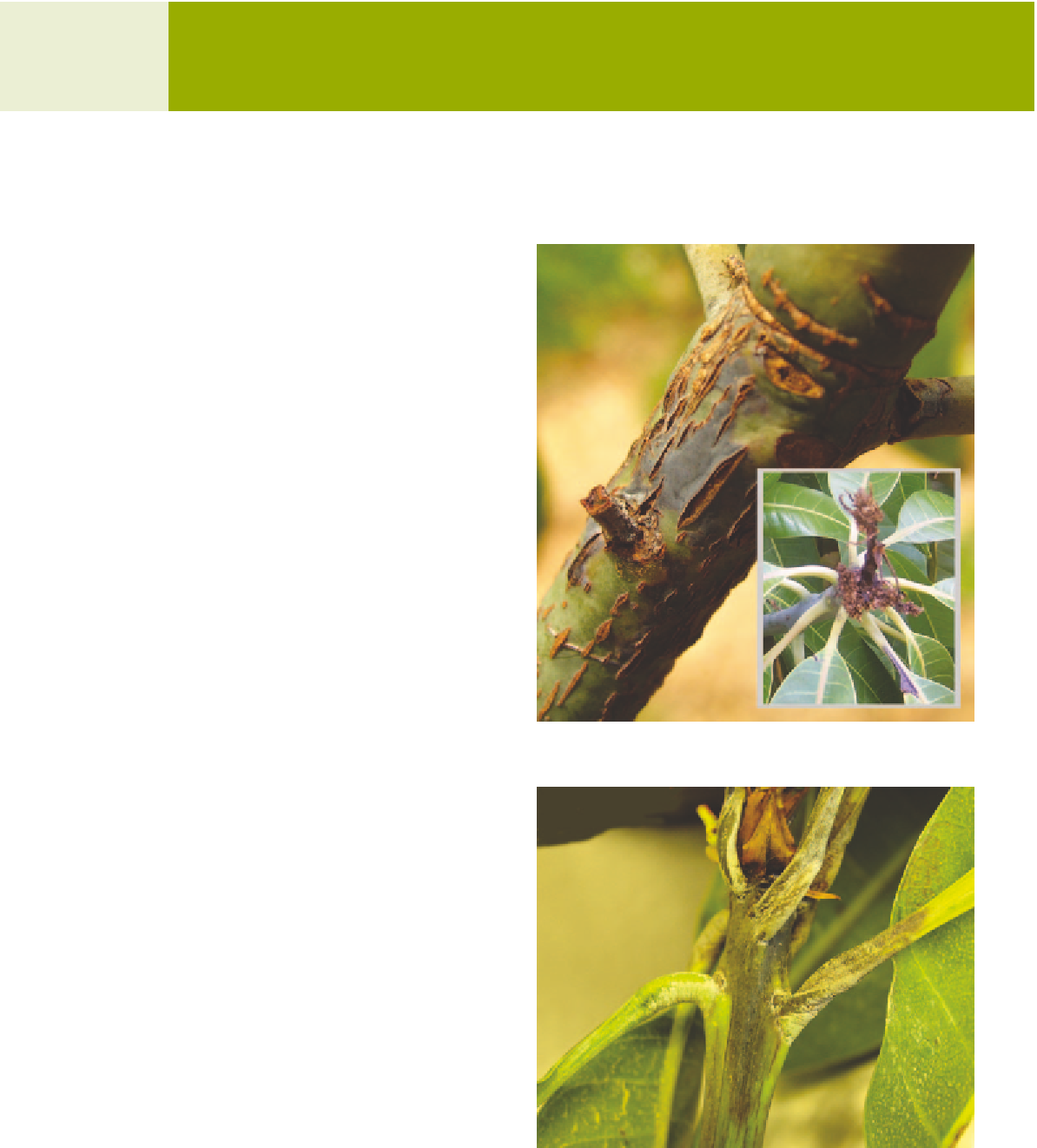Agriculture Reference
In-Depth Information
12
MANGO
(
Mangifera indica
)
Mango evolved in India and South-East Asia. Two types of
M. indica
are distinguished by their reproductive mode and
centre of diversity. The 'Indian' type is a subtropical group
with monoembryonic seed, and the 'South-East Asian' type
is a tropical group with polyembryonic seed. Traditionally
in Australia, the mango industry has been dominated by
the polyembryonic cultivar, Kensington Pride, although
other cultivars are now increasing in importance.
The most important diseases affecting mango are
anthracnose and stem-end rot.
BACTERIA
APICAL BUD NECROSIS
■
Other names: apical necrosis, bacterial black blight.
Cause
Pseudomonas syringae
pv.
syringae
(potentially other
P. syringae
pathovars).
Fig 12.1 Apical bud necrosis symptoms on a mango stem. Inset:
death of new growth.
Symptoms
Leaves: lesions on leaves start as interveinal, angular black
spots, which may coalesce. They are readily distinguished
from
Xanthomonas campestris
pv.
mangiferaeindicae
bacterial black spot by not having a chlorotic halo, being
f flat and almost always associated with the main leaf vein
and secondary veins. Different symptoms occur on the
stem and there are no fruit symptoms. The blighted areas
often alternate between the sides of the leaf.
Stems: stem surface symptoms may include raised dark
lesions and splitting. When cut, the stem may exhibit a grey
darkening of some of the vascular bundles.
Flowers: blighted f flower panicles can have a scorched look
and die back. Symptoms can be confused with anthracnose
f flower blight.
Source of infection and spread
There is evidence that the causal bacteria can live
epiphytically on the plant without causing any symptoms.
Fig 12.2 Blight in an apical meristem associated with apical bud
necrosis.












